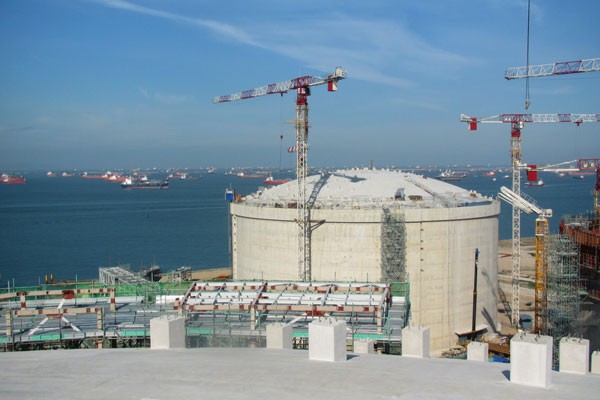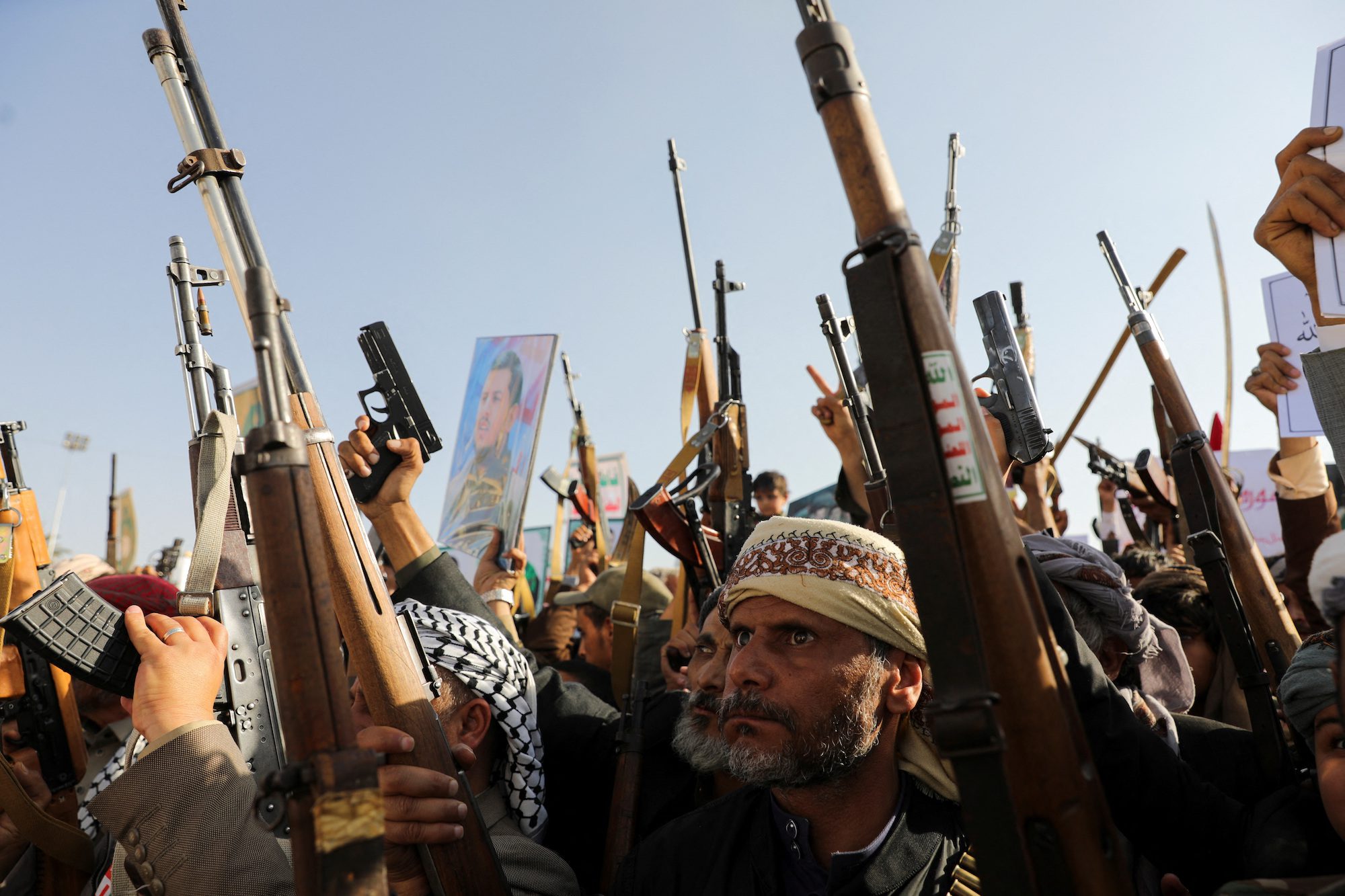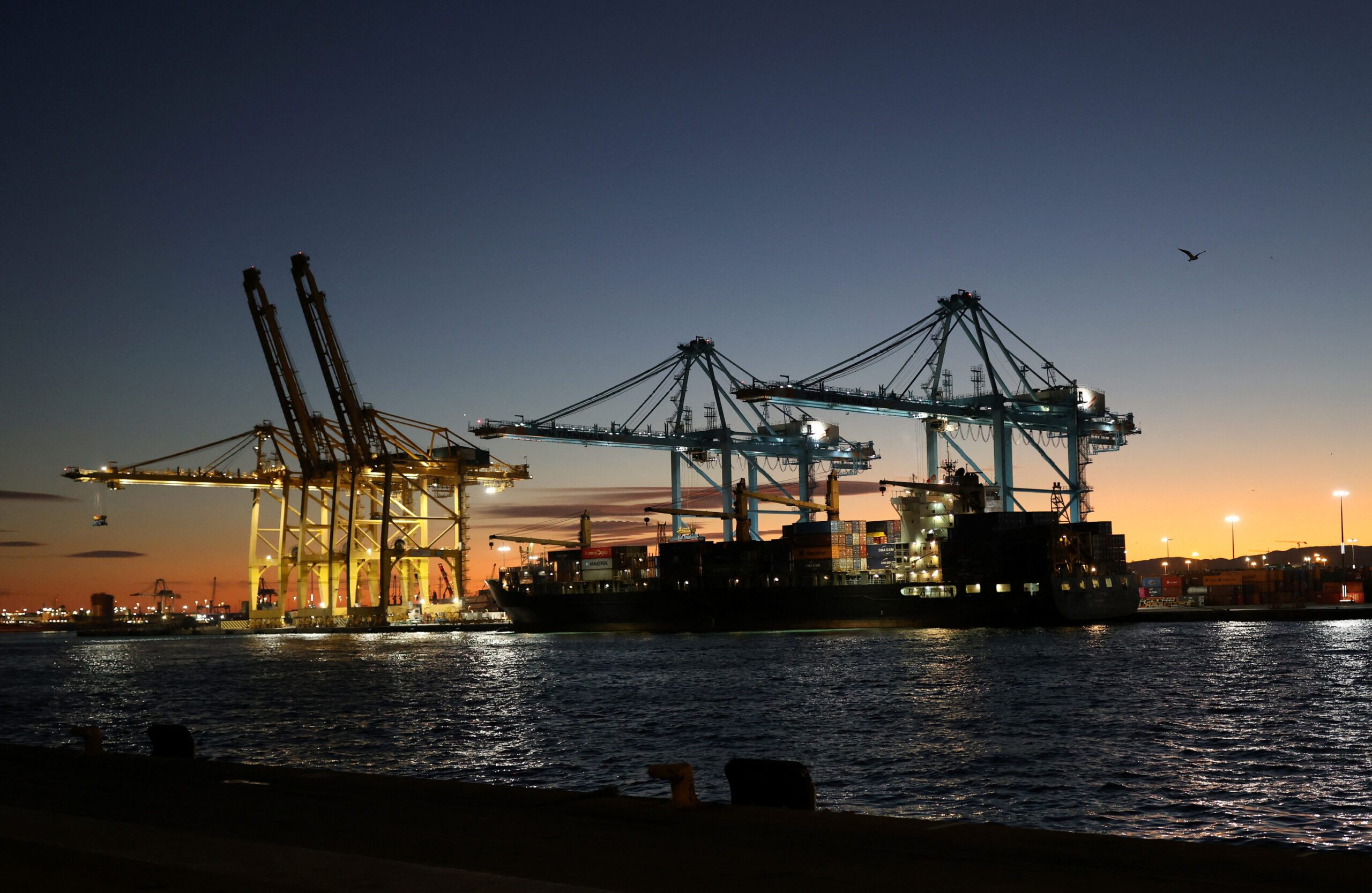A Q-Max LNG Carrier, image: QatarGas
(Bloomberg) — Singapore LNG Corp.’s fourth gas storage tank may have 260,000 cubic meters of capacity, enough to fit four A380 jumbo jets, the company’s chief executive officer said.
The fourth storage tank is being considered to lower storage costs and hold cargoes from a 266,000 cubic-meter Q-Max LNG ship, the largest vessels in operation, CEO Neil McGregor said in an interview yesterday. For comparison purposes, he said the proposed LNG tank could enclose four of the double-deck Airbus jets, the largest commercial passenger plane in service, stacked on top of each other.
“The fourth tank can either be the same size as what we have now, at 180,000 cubic meters, or a 260,000 cubic meter tank, which is one of the largest tanks in the world,” McGregor said.
The company awarded an engineering design contract to WorleyParsons Pte in November to study the terminal’s expansion plans. A final decision on whether to build the fourth LNG tank is expected by year end, and construction could be completed by 2017, McGregor said.
The fourth unit may cost around S$500 million ($403.7 million), S. Iswaran, Singapore’s second trade minister, said in October.
“At this point, S$500 million is just a very broad ballpark figure,” McGregor said. “It’s pretty difficult to put a figure on the cost, because as soon as I do, you’re signaling to the market what sort of size and capacity of expansion you’re talking about, and the government has not fixed that yet.”
Future LPG
WorleyParsons’s study covers the feasibility of building a liquefied petroleum gas terminal, the McGregor said.
“The reason we’re studying it now is that we can get a handle on what the cost of a LPG terminal is,” he said.
The Jurong Island terminal’s secondary jetty is currently set to accept LNG and LPG ships in the range of 80,000 to 260,000 cubic meters. The secondary berth is not installed with LPG equipment, and that may change when Singapore LNG decides to enter the market, he said.
The site of the terminal has land for two LPG tanks, which may be built if “the business case underpins the investment,” McGregor said.
An LPG facility at the terminal can be used to increase the energy content of LNG cargoes and decrease methane to produce the so-called rich natural gas preferred by North Asian LNG buyers, McGregor said.
More Tanks
The master plan for the Singapore terminal calls for as many as seven storage tanks and a peak capacity of 20 million metric tons, McGregor said.
The site will receive its initial cargo from Qatar in the first quarter to facilitate a start up in the second quarter. The Energy Market Authority, Singapore’s regulator, agreed in 2008 to import LNG from BG Group Plc over 10 years.
“As the aggregator of LNG demand for Singapore, we are looking forward to the first cargo arriving into the terminal,” Damien Bird, BG’s Singapore-based spokesman, said in an e-mailed statement. Bird declined to discuss the source of the LNG or its arrival date.
BG’s first LNG cargo to Singapore may come from Trinidad & Tobago or Africa, McGregor said.
Marine Bunker
The Singapore terminal may provide marine bunkering services, which is part of WorleyParsons’ feasibility study for the next phase of expansion, McGregor said.
The company may invest in equipment for supplying LNG trucks along with the fourth tank, McGregor said. Smaller ships can load LNG from the terminal’s third and smallest jetty, which is due to be completed in early 2014, before taking it to larger vessels waiting offshore, he said.
The Jurong Island terminal’s third jetty can accept small LNG ships and barges in the range of 10,000 to 40,000 cubic meters, according to the company’s website.
New Supply
Singapore’s energy regulator will start new consultations with the LNG industry about future supply once BG sells the cargoes from its 3 million metric ton-a-year contract, Lee Yi Shyan, the country’s trade minister, said Jan. 24. The process will start soon, Sharon Tan, a spokeswoman with the regulator, said today in an interview.
Three new companies may become importers, aggregators or traders using the Singapore LNG terminal along with BG, McGregor said. “If you look at demand, there’s a domestic market on one side and a trading market on the other side.”
The Singapore terminal may be used to supply countries in Southeast Asia with LNG on a short-term basis, McGregor said. Malaysia and Thailand will enter the trading market as it develops, leading to a concentration of services and supply in the region, he said.
“There will be competition for sure when it comes to growing the market,” McGregor said.
Malaysia’s Petroliam Nasional Bhd. has a 3.8 million ton-a- year LNG terminal at Melaka that has yet to start operations. Thailand’s PTT Pcl has a 5 million ton-a-year facility in Map Ta Phut that began receiving LNG in 2011, according to data compiled by Bloomberg.
– Chou Hui Hong, Copyright 2013 Bloomberg.

 Join The Club
Join The Club











